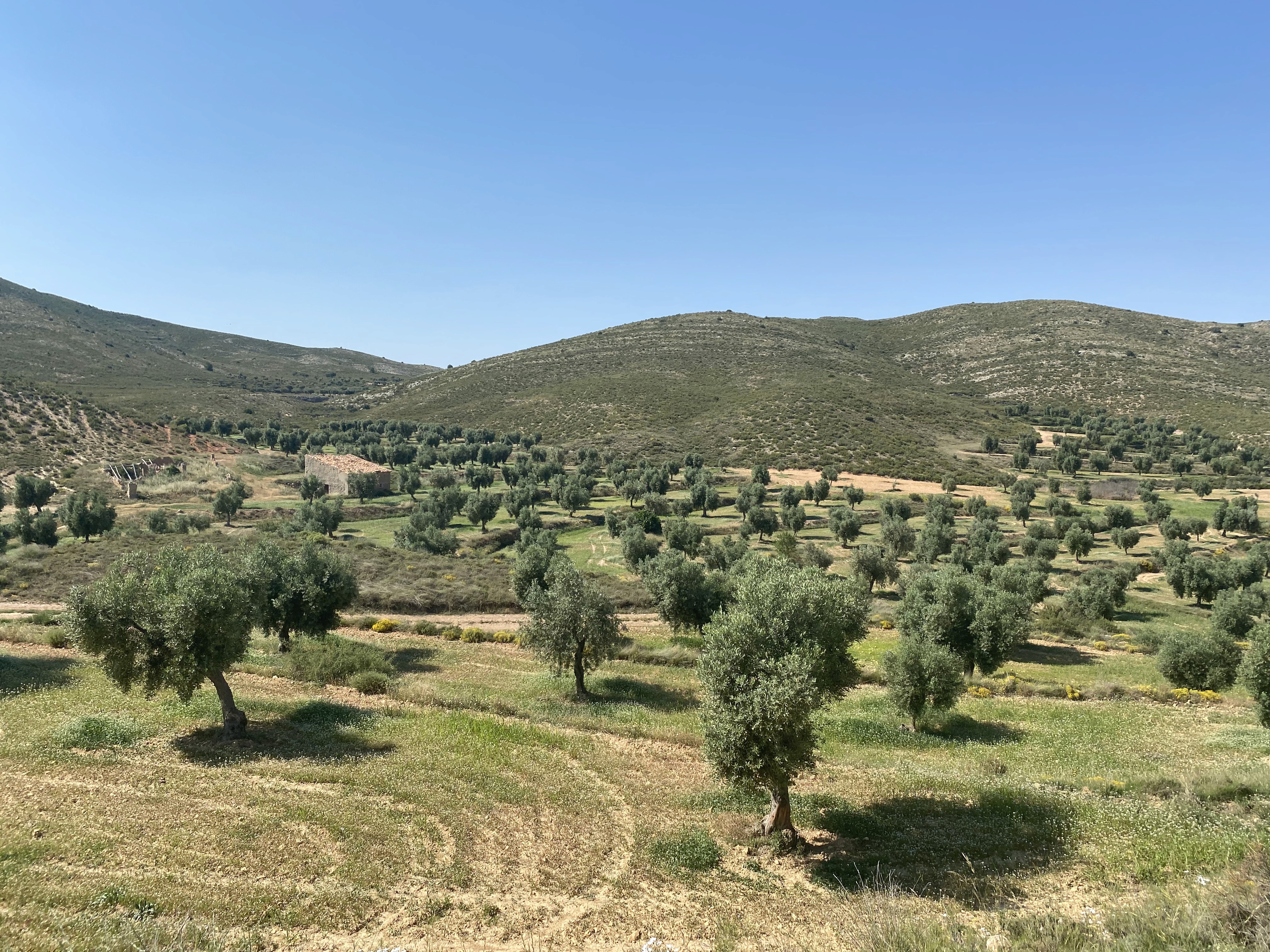Regenerative tourism
Regenerative tourism
Rural tourism, a growth vector against depopulation.
Rural tourism, a growth vector against depopulation.
23 de septiembre de 2020


By Pako Rodríguez, a consultant specializing in tourism. (Original publication in Spanish)
Tourism and depopulation are two topics that, increasingly, need to find a perfect point of synergy for joint growth. The former is currently at a complete standstill and in search of future identity, with very clear needs regarding sustainability, positive impact on the environment in which it develops, and respect for host communities and their culture and heritage. The latter is already part of our country's political agenda and, despite the multitude of projects aimed at solving or alleviating the situation, it remains a problem affecting many areas of our geography and the inhabitants who live there. The scarcity of basic services, the limited availability of complementary services, and precarious connectivity, both geographically and digitally, create a situation that requires the intervention of many diverse actors.
In this scenario, rural development through tourism - and tourism development through rural areas - become strong options to help increase and enhance the tourist offer and mitigate depopulation. A depopulation that, according to data, keeps the majority of the population in Spain in a minority of the territory, which is part of the current problem. For sparsely populated areas to become a viable reality for both residents and tourists, they must have minimum infrastructure, with digitization being one of the keys to this transformation.
With gradual and organic growth, local communities can gradually benefit from new basic services and new job and business opportunities. Tourism can grow within our borders with less saturation of traditional destinations, thanks to the emergence of new alternatives. Finally, tourists will have new options for spending their holidays. And today, more than ever, these alternatives are very appealing given what they can offer in relation to the situation we live in.

It is at this last point that the great opportunity associated with a crisis like the current one lies, at least for the areas that until now have been suffering from the practical disappearance of some territories.
Let’s take a brief look at how we can value these territories:
1. What capacity does my destination have?
In the analysis of destinations, it is important to understand what capacity is available in the territory to become a possible destination: what accommodation offer already exists, in what quantity and with what quality, and what assets - for example, empty homes - are being underutilized and can be valued.
2. How accessible is it?
Similarly, it is important to grasp the reality regarding access, whether by land, sea, or air, and accessibility. In this regard, it is advisable for territories to be imaginative about existing solutions. A good example is posed by digital collaborative transport platforms, whose trips are currently mostly to destinations not covered by traditional offerings, or car-sharing within the destinations to facilitate transport between municipalities. Lastly, accessibility is a very interesting point, and not only when discussing social justice, but also because it is a very underserved - or poorly connected - niche compared to existing demand and represents an opportunity we will delve into in future articles.
3. What resources can stand out?
Regarding resources, the pandemic can represent a golden opportunity for valorizing the natural and cultural heritage of these areas: landscapes and nature, no saturation, clean air, less artificial noise, outdoor activities, gastronomy… in other words, everything that we people who have been locked up for months are seeking and that currently find ourselves with serious difficulties in traveling medium to long distances. To achieve this, it is necessary to look beyond the obvious or traditional. Last week, from Ideas for Change, we participated in the III Starlight meeting in the province of Teruel. This foundation invites people to look up to enjoy a resource that increasingly attracts more travelers: stargazing in sparsely populated areas. And that is what we did at the Monastery of Olivar, one of the most interesting Starlight accommodations that exist and that is helping to revitalize nearby areas.
4. Who can accompany me on my journey?
Finally, it is worth remembering that we are not alone and that collaboration is more important today than ever. Knowing our surroundings, our ecosystem, and seeking synergies is crucial to becoming stronger. We have as an example Less than Hundred, an international network of special places with fewer than 100 inhabitants seeking to position themselves on the tourist map. Let us not forget that, in addition to the much-desired public-private collaboration, there also exists private-private (between companies) and public-public (between administrations). Each and every one of these is essential for tourist destinations. The most recent example of collaboration between administrations is that of Seville and San Sebastián, two destinations separated by nearly 1,000 km and united by a common traveler profile: the cultural. Of course, the first step taken has been to seek the participation of airlines to improve the connection between both cities.

All these reflections are essential as a prelude to start answering the following questions: What do I want to be as a destination? or, as we say in Ideas for Change: What makes my destination cool? What am I missing to become that imagined destination? Who is my tourist and how do I engage with them?
At Ideas for Change, we have launched Cool Destinations, a line aimed at helping territories that want to become tourist destinations and at destinations that want to transform themselves, leaving behind outdated and obsolete schemes.
If you want to be part of the new reality of tourism, let's talk. And above all, don't lose sight of us! We will tell you more about new tourism opportunities in upcoming posts.
By Pako Rodríguez, a consultant specializing in tourism. (Original publication in Spanish)
Tourism and depopulation are two topics that, increasingly, need to find a perfect point of synergy for joint growth. The former is currently at a complete standstill and in search of future identity, with very clear needs regarding sustainability, positive impact on the environment in which it develops, and respect for host communities and their culture and heritage. The latter is already part of our country's political agenda and, despite the multitude of projects aimed at solving or alleviating the situation, it remains a problem affecting many areas of our geography and the inhabitants who live there. The scarcity of basic services, the limited availability of complementary services, and precarious connectivity, both geographically and digitally, create a situation that requires the intervention of many diverse actors.
In this scenario, rural development through tourism - and tourism development through rural areas - become strong options to help increase and enhance the tourist offer and mitigate depopulation. A depopulation that, according to data, keeps the majority of the population in Spain in a minority of the territory, which is part of the current problem. For sparsely populated areas to become a viable reality for both residents and tourists, they must have minimum infrastructure, with digitization being one of the keys to this transformation.
With gradual and organic growth, local communities can gradually benefit from new basic services and new job and business opportunities. Tourism can grow within our borders with less saturation of traditional destinations, thanks to the emergence of new alternatives. Finally, tourists will have new options for spending their holidays. And today, more than ever, these alternatives are very appealing given what they can offer in relation to the situation we live in.

It is at this last point that the great opportunity associated with a crisis like the current one lies, at least for the areas that until now have been suffering from the practical disappearance of some territories.
Let’s take a brief look at how we can value these territories:
1. What capacity does my destination have?
In the analysis of destinations, it is important to understand what capacity is available in the territory to become a possible destination: what accommodation offer already exists, in what quantity and with what quality, and what assets - for example, empty homes - are being underutilized and can be valued.
2. How accessible is it?
Similarly, it is important to grasp the reality regarding access, whether by land, sea, or air, and accessibility. In this regard, it is advisable for territories to be imaginative about existing solutions. A good example is posed by digital collaborative transport platforms, whose trips are currently mostly to destinations not covered by traditional offerings, or car-sharing within the destinations to facilitate transport between municipalities. Lastly, accessibility is a very interesting point, and not only when discussing social justice, but also because it is a very underserved - or poorly connected - niche compared to existing demand and represents an opportunity we will delve into in future articles.
3. What resources can stand out?
Regarding resources, the pandemic can represent a golden opportunity for valorizing the natural and cultural heritage of these areas: landscapes and nature, no saturation, clean air, less artificial noise, outdoor activities, gastronomy… in other words, everything that we people who have been locked up for months are seeking and that currently find ourselves with serious difficulties in traveling medium to long distances. To achieve this, it is necessary to look beyond the obvious or traditional. Last week, from Ideas for Change, we participated in the III Starlight meeting in the province of Teruel. This foundation invites people to look up to enjoy a resource that increasingly attracts more travelers: stargazing in sparsely populated areas. And that is what we did at the Monastery of Olivar, one of the most interesting Starlight accommodations that exist and that is helping to revitalize nearby areas.
4. Who can accompany me on my journey?
Finally, it is worth remembering that we are not alone and that collaboration is more important today than ever. Knowing our surroundings, our ecosystem, and seeking synergies is crucial to becoming stronger. We have as an example Less than Hundred, an international network of special places with fewer than 100 inhabitants seeking to position themselves on the tourist map. Let us not forget that, in addition to the much-desired public-private collaboration, there also exists private-private (between companies) and public-public (between administrations). Each and every one of these is essential for tourist destinations. The most recent example of collaboration between administrations is that of Seville and San Sebastián, two destinations separated by nearly 1,000 km and united by a common traveler profile: the cultural. Of course, the first step taken has been to seek the participation of airlines to improve the connection between both cities.

All these reflections are essential as a prelude to start answering the following questions: What do I want to be as a destination? or, as we say in Ideas for Change: What makes my destination cool? What am I missing to become that imagined destination? Who is my tourist and how do I engage with them?
At Ideas for Change, we have launched Cool Destinations, a line aimed at helping territories that want to become tourist destinations and at destinations that want to transform themselves, leaving behind outdated and obsolete schemes.
If you want to be part of the new reality of tourism, let's talk. And above all, don't lose sight of us! We will tell you more about new tourism opportunities in upcoming posts.


